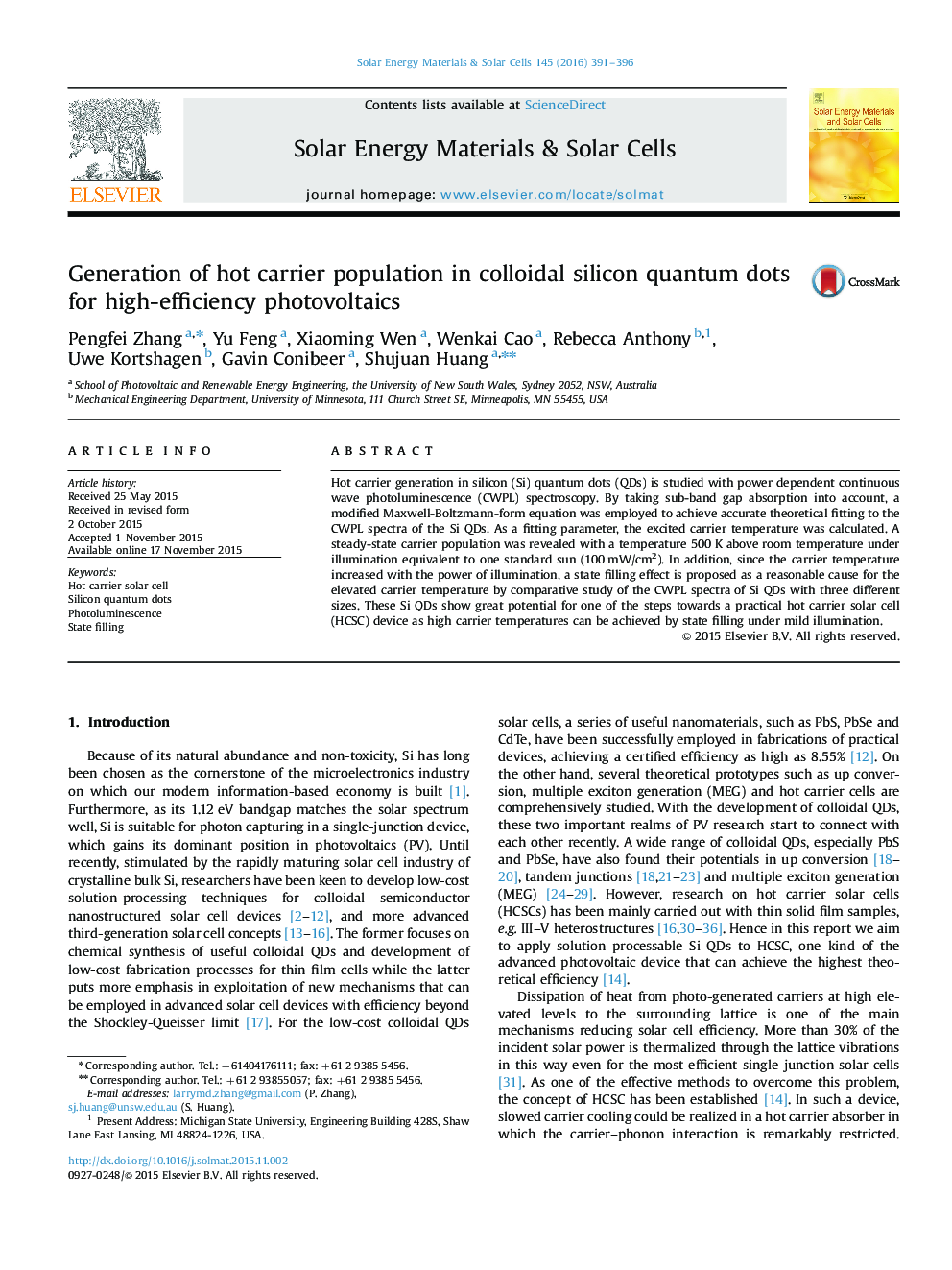| Article ID | Journal | Published Year | Pages | File Type |
|---|---|---|---|---|
| 77694 | Solar Energy Materials and Solar Cells | 2016 | 6 Pages |
•Silicon quantum dots with three different sizes are investigated.•Asymmetrical broadening of PL spectra indicates generation of hot carrier.•A hot carrier population with 500 K above room temperature is revealed.•A state filling effect is proposed.
Hot carrier generation in silicon (Si) quantum dots (QDs) is studied with power dependent continuous wave photoluminescence (CWPL) spectroscopy. By taking sub-band gap absorption into account, a modified Maxwell-Boltzmann-form equation was employed to achieve accurate theoretical fitting to the CWPL spectra of the Si QDs. As a fitting parameter, the excited carrier temperature was calculated. A steady-state carrier population was revealed with a temperature 500 K above room temperature under illumination equivalent to one standard sun (100 mW/cm2). In addition, since the carrier temperature increased with the power of illumination, a state filling effect is proposed as a reasonable cause for the elevated carrier temperature by comparative study of the CWPL spectra of Si QDs with three different sizes. These Si QDs show great potential for one of the steps towards a practical hot carrier solar cell (HCSC) device as high carrier temperatures can be achieved by state filling under mild illumination.
Graphical abstractHot carrier generation is revealed by power dependent continuous wave photoluminescence (CWPL) spectroscopic study of Si quantum dots (QDs), which is further explained with a state filling effect.Figure optionsDownload full-size imageDownload as PowerPoint slide
